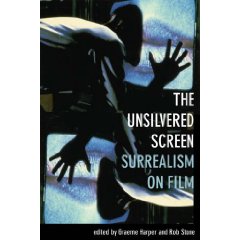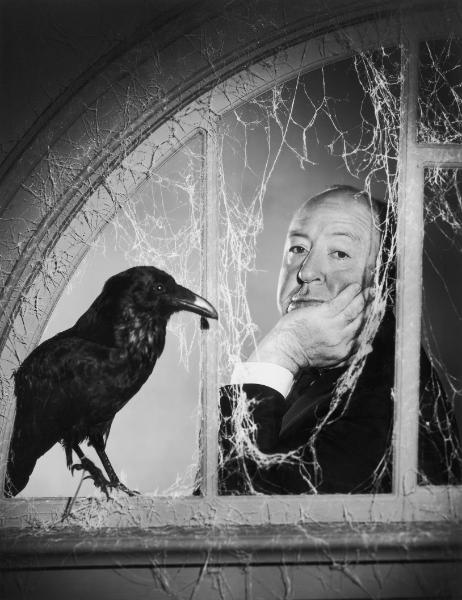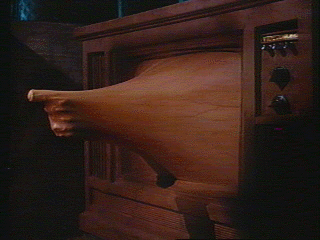
Professor Graeme Harper is Director of the National Institute for Excellence in the Creative Industries at University of Wales, Bangor. He is author of Swallowing Film (2000), and Comedy, Fantasy and Colonialism (2001), and the co-editor of Signs of Life: Medicine and Cinema (2005). He is also the co-editor of the journal Studies in European Cinema. With Rob Stone he is the co-editor of The Unsilvered Screen: Surrealism on Film (Wallflower Press, 2007). Despite a busy schedule, Professor Harper recently shared his thoughts on aspects of surrealism and its connection to horror films.
TheoFantastique: Thank you both for editing a volume that touches on an interesting aspect of not only art but cinema as well. I have been thinking through the relationship between Surrealism and horror films after reading the suggestion from David Skal in The Monster Show: A Cultural History of Horror, but I didn’t know where to turn. Your book provided not only a good place to start, but also some good thoughts on specifics in horror films and beyond. To begin, how did you come to be associated with the subject of Surrealism?
Graeme Harper: I began in the way many others probably began: by noticing Dali’s work, and then by looking further into what was going on, and why. From there the historical elements emerged. And, being a fiction writer, I quickly was drawn to the work which then bridged to Futurists such as Marinetti. I wasn’t aware, at first, of how political the movement/s was/were.
TheoFantastique: Can you summarize Surrealism in terms of what defines it and how it has been expressed among painters and poets?
Graeme Harper: Anti-rationalism, dream, freeing people from structures – all this fits somewhere. It’s often not useful to think of Surrealism as one thing; even though the manifesto work suggests a “glue” between proponents, there’s lots of personalities/individualism, and they all have their own specific takes.
TheoFantastique: How did Surrealism work itself into film and in what genres and forms?
Graeme Harper: The visual was pretty strong within the movement. Being as individualism and individual integrity and autonomy is strong, then the notion of the visual as open interpretation quite rightly had some key value. The idea of a new language of the visual is within the ideas of the Surrealists – and this fits politically as well as aesthetically with what they were thinking. Creativity untethered also fits well and the notion of the visual’s natural generativity sits there also.

TheoFantastique: One of the chapters in The Unsilvered Screenthat most resonated with the purposes of this website is Barbara Creed’s that looks at Surrealism in the films of Alfred Hitchcock, David Lynch, and David Cronenberg. Creed describes Hitchcock as not only a “master of suspense” but also a “master of the surreal.” In what ways might this be so for viewers not used to recognizing this element in his work?
Graeme Harper: Light and dark. Hitchcock scholars know this element. But the notion of the persistence of time (and no need to mention the film of Hitchcock’s that exemplifies that technically so well!) is key.
Compositionally it’s very interesting to think how much these two things: light/dark and time are involved in the Hitchcock world view.
TheoFantastique: At one point in her chapter Creed references Carl Belz who argues that Surrealist art includes the elements of “emotional shock, psychological chaos, unabashed eroticism, and a disturbing ‘aura” surrounding characters” that Creed argues are all presented in The Birds. Can you touch on some of the surrealist elements in the film as a case study to help readers appreciate this aspect of the classic film?
Graeme Harper: I see Barb’s chapter has had some impact on you! Excellent! It’s a very good exploration. Okay, even at its simplest, the sense of natural chaos overwhelming the imposed structures of human life is part of The Birds. But you could also look at the use of angular close-ups involving faces and terror (or, indeed, the imagined use of these also: because, of course, much like Surrealist art in a more general sense, The Birds is full of suggestion and the power of suggestion).

TheoFantastique: David Cronenberg’s horror films tap into surrealist aspects as it touches on the body. What does Surrealism say about our conceptions of the body, and how is some of this pushed, perhaps to extremes, in Cronenberg’s work in Scanners and Videodrome?
Graeme Harper: Well, yes, Cronenberg – an excellent question. Liberating the human imagination? Absurdity? Psychological confusion? A belief in the body as conduit not container? Cronenberg, in Surrealist terms, is not entirely pushing “to extremes”, given that, say, something like telepathy is relatively conservative in nature, and selective in human involvement (ie. it doesn’t necessarily upset the political or social order). Videodrome is perhaps more interesting in that sense. Then, of course, we could talk about the more recent A History of Violence and wonder if the intrusion of individual history into family/group history reveals something of a Surrealist tendency – not least through the use of physical attributes (the appearance of Ed Harris, for example) to destabilize the mainstream functioning of human life. No as unlike The Fly as some might suspect!
TheoFantastique: Graeme, thank you for making your fine book on Surrealism available to me, and for answering some of my questions on the topic as it relates to horror and suspense in cinema.





There are no responses yet